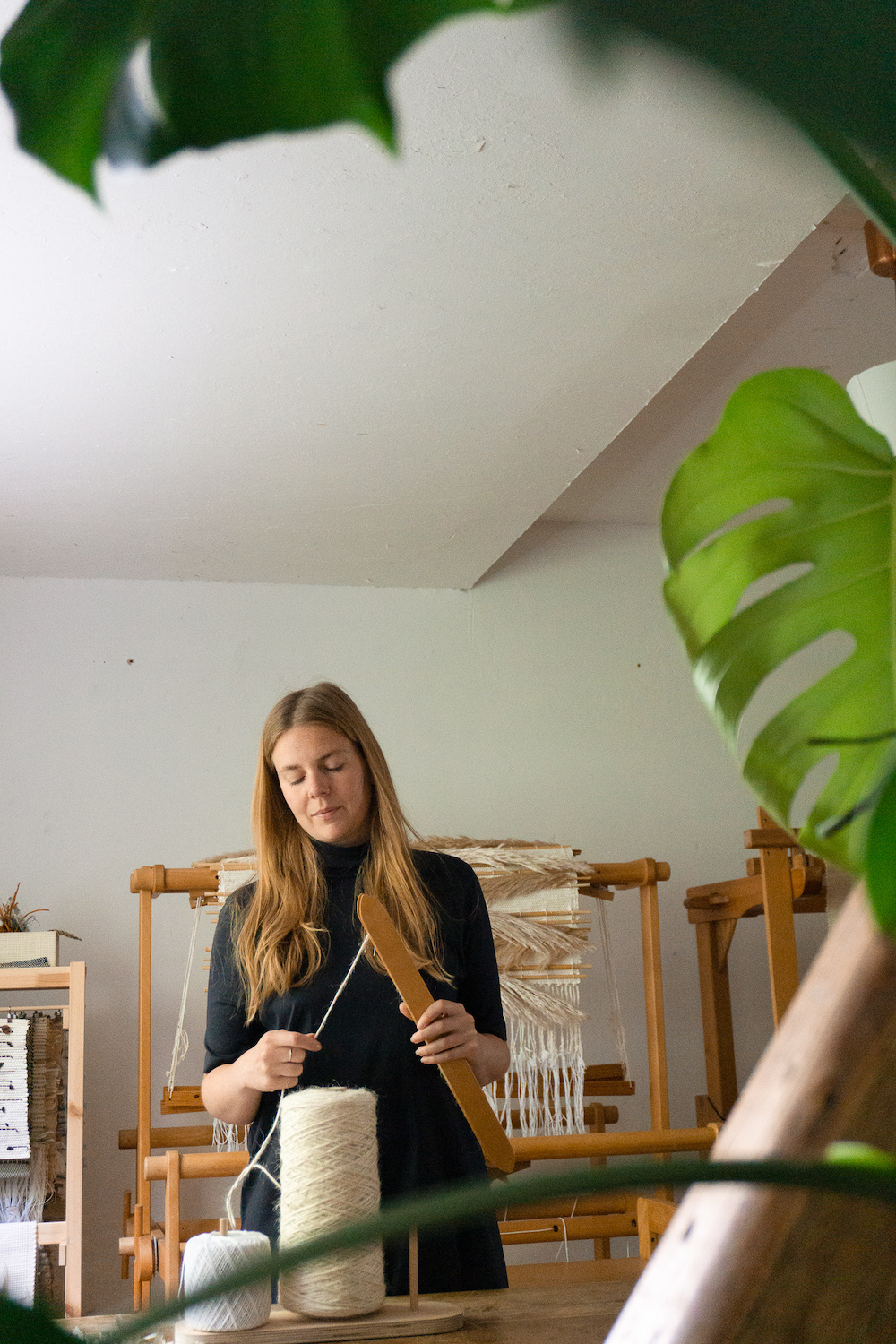Biophilic Design
Nature offers us life-balance and wellbeing. It can increase human mental abilities, intelligence, creativity and even healing-processes. This biophilic effect is integrated in EFFI’s designs to bring natural features back to our urban life and interiors. Through thorough scientific research, EFFI extracted guidelines for the application of biophilia to textile design.
The fascination of nature with its endless diversity and incredible evolution is the base for EFFI's color, structure and material concepts. Therefore, every textile, surface and pattern reflects nature in a direct or indirect way and reminds human senses of the natural world. Additionally, other features like biophilic structures, reliefs and organic materials support the natural aura of the products.
EFFI is constantly keeping up on Biophilia, nature and architecture research to develop biophilic (textile) design further. If you're interested in its scientific background we're happy to hear from you! Besides biophilic design consulting EFFI offers you the script: 'Home by Nature: Integrating Nature into our Home Interior with Biophilic Design'.
"The fascination for nature and landscape started very early. As a child I put leaves under the microscope and studied birds in the garden. I spent a lot of time outside and could keep myself busy in every part of nature. Today, I love running in the forest and take long walks at the sea. While sailing I enjoy the connection with natural elements. This does not only make me feel free and joyful but also gives me energy and stress relief. I figured that nature provides a basis for my physical and mental well-being. Besides, the flora and fauna always inspired me and the world’s natural environment is so rich of species, processes and functions that I never get bored of it. So I asked myself where this fascination is coming from: Why does nature has such an incredible effect on my creativity and well-being and is there proof for a positive impact on humans?
Actually there is and it’s called biophilia."
"With philosophical and scientific research on biophilia as well as own analysis, I developed a concept for biophilic textile design. This research provides a personal foundation for my design philosophy and product development, but also influences work processes and presentations."
Die Natur bietet uns Menschen Balance und Gesundheit. Sie kann unsere mentalen Fähigkeiten, Intelligenz, Kreativität und sogar Heilungsprozesse verbessern. Diese auf Biophilie beruhende Effekte sind in EFFI's Designs integriert um natürliche Eigenschaften in urbanen Räumen zu integrieren. Auf der Basis von gründlichen Recherchen hat EFFI Leitlinien für biophilic Textildesign entwickelt.
Die Faszination für Natur mit ihrer unendlichen Diversität und unglaublicher Evolution ist die Grundlage für EFFI's Konzepte, Farben, Strukturen und Materialien. Daher reflektiert jede Textilie und Oberfläche sowie jedes Muster in direkter oder indirekter Weise ein Stück Natur und erinnert menschliche Sinne an die natürliche Umwelt. Zusätzlich unterstützen weitere Eigenschaften wie biophilic Strukturen, Reliefe und organische Materialien die natürliche Aura der Produkte.
EFFI betreibt permanent Recherche über Biophilia, Natur und Architektur um biophilic (textile) design weiter zu entwickeln. Bei Interesse am wissenschaftlichen Hintergrund werden wir gerne kontaktiert. Neben Biophilicdesign-Beratung stellt EFFI auf Anfrage ihr Skript: 'Home by Nature: Integrating Nature into our Home Interior with Biophilic Design' zu verfügung.
"Die Faszination für Natur und Landschaft habe ich schon als Kind entdeckt, immer viel Zeit draußen verbracht, Blätter mikroskopiert und Vögel beobachtet. Heute laufe ich im Wald und liebe lange Spaziergänge am Meer. Beim Segeln genieße ich die Verbindung zu den natürlichen Elementen - vor allem Wind und Wasser. Diese Erfahrungen geben mir Freiheit, Freude, Energie und Entspannung aber stärken auch Konzentration und Kreativität. Hinzu kommt, dass Flora und Fauna mich schon immer für meine Designs inspiriert haben. Da unsere biologische Welt so reich an Spezies, Prozessen und Funktionen ist finde ich immer neue Biotope und Lebewesen die mich faszinieren. Irgendwann stellte ich mir die Frage warum die Natur einen so einzigartigen Effekt auf den Menschen hat und ob es wissenschaftliche Beweise gibt.
Tatsächlich gibt es Studien die unter dem Begriff Biophilia diese Einflüsse belegen.
"Ich tauchte ein in wissenschaftliche Recherchen über Biophilia und analysiere stetig biophilic design um es in eigenen Konzepten auf Textildesign anzuwenden. Diese theoretische, konzeptionelle Arbeit bildet eine Grundlage meiner Designphilosophie und Produktentwicklung, beeinflusst aber auch Arbeitsprozesse und Präsentationen. "

BIOPHILIC DESIGN RESOURCES AND CREDITS
Books:
ARVAY(C.G.), Der Biophilia Effekt, Wien, Ullstein, 2015
BIRNBACHER (D.), Ökophilosophie, Stuttgart, Philipp Reclam jun. Gmbh&Co, 1997
BLAISSE (P.), Inside Outside, New York, The Monacelli Press, 2009
FRANKLIN (A.), Nature and Social Theory, London, SAGE Publications Ltd, 2002
FUAD-LUKE (A.), Eco Design, The Sourcebook, Third edition fully revised, San Francisco, Cronicle Books, 2010
KELLERT (R.S.), WILSON (O.S.), The Biophilia Hypothesis, Washington D.C., Island Press, 1993
LOUV (R.), The Nature Principle: Reconnecting with Life in a Virtual Age, Algonquin Books of Chapel Hill, April 2012
ORR (D.W.), The Nature of Design, New York, Oxford University Press, 2002
